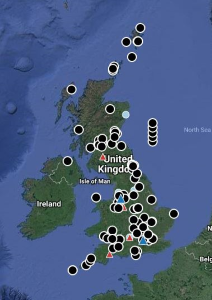Review of Energy System Demonstrators
Energy System Demonstrators are physical demonstrations testing new technologies for low-carbon energy infrastructure. A review of energy systems demonstrator projects in the UK has been undertaken for the UK Energy Research Centre (UKERC) by the Energy Systems Research Unit (ESRU) at the University of Strathclyde. The review encompassed 119 demonstrators and consisted of two phases: 1) the identification of demonstrator projects and 2) an analysis of projects and their outcomes.
- Final Report (PDF)
- Phase 1
- Phase 1 reports for each demonstrator (PDF)
- Zip file containing
all the Phase 1 reports (zip of PDFs: 2.3 MB)
- Phase 2
- Phase 2 reports for each demonstrator (PDF)
- Zip file containing
all the Phase 2 reports (zip of PDFs: 9.6 MB)
- Interactive map of UK
demonstrators (GIS)
It opens in a new window
NB: This map works best in Edge, Chrome, Firefox and Safari. It may not render correctly in IE. .
About Energy Demonstrators
The review defined an energy system demonstrator as “the deployment and testing of more than one technology type that could underpin the operation of a low-carbon energy infrastructure in the future”. Only demonstrators that post-date the 2008 Climate Change Act were included and that included a physical demonstration at one or more UK sites. 119 projects were identified that met the search criteria.
There were two phases of review activity. Phase 1 involved identification and documentation of demonstration projects, involving a systematic search to identify and record the details of projects. Phase 2 was a review of project outcomes and outputs, particularly end-of-project evaluations, covering technical, economic and social outcomes where available.
The review outputs (available here) are a final report summarising the findings, 119 demonstrator project summaries (the Phase 1 reports), 119 demonstrator output analyses (the Phase 2 reports) and a GIS (Geographic Information System) map and database showing the locations and project details of the demonstrators.
The final report, attendant project summaries and GIS data are intended to provide policy makers and funding bodies with an overview of the existing demonstrator “landscape”, enabling decisions on future demonstrator calls and the focus of those calls to be made with a clearer knowledge of what has already been done.
